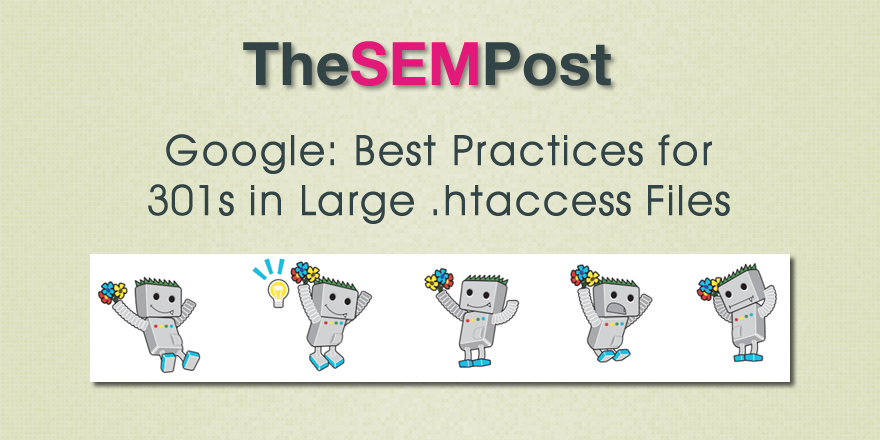 Someone raised an interesting question on Twitter today… what to do about older 301 redirects, especially when the redirect file begins to get a bit long and complicated. Could they be deleted after a time? Or should you keep them in their massive files with the potential server slowdown for visitors?
Someone raised an interesting question on Twitter today… what to do about older 301 redirects, especially when the redirect file begins to get a bit long and complicated. Could they be deleted after a time? Or should you keep them in their massive files with the potential server slowdown for visitors?
@Trey_Collier if the new page is already indexed, you can remove the old one.
— Gary Illyes (@methode) April 27, 2016
Gary Illyes from Google said that once the new page is indexed, it could be removed. Of course, this is purely from a technical standpoint of when can you remove a 301. Sites do not need to keep up 301 redirects up for eternity in order for Google to figure out old pages should be matched with a specific brand new one.
However, it obviously goes well beyond that too. Keeping those 301 redirects if any of the older pages have incoming links to them or actual visitors redirecting through them, then obviously keeping those 301 redirects is the best practice.
@methode @Trey_Collier Do make sure that none of those old pages get actual visitors/links. If any do, you should keep 301s active
— Jennifer Slegg (@jenstar) April 27, 2016
Illyes followed up with clarification as well, from a best practices point of view:
@Trey_Collier 1/2 ok, the BEST practice is to keep the redirects indefinitely, but that's not always feasible (i.e. site moves) @jenstar
— Gary Illyes (@methode) April 27, 2016
@Trey_Collier 2/2 so removing the redirects after signals were passed (i.e. new page indexed and serves for old url) is fine @jenstar
— Gary Illyes (@methode) April 27, 2016
Now depending on the size, having a super long .htaccess file can slow down the server… but again the size isn’t the only factor in the equation, because the server itself also plays a role, and a server’s performance can also vary greatly.
Bottom line, if you have a 301 redirect, you can remove it once Google has crawled it and matched up the old page with the new one. But if you can leave it indefinitely, that is the best route to go, especially if you need to redirect linking signals or actual visitors to the new page. Then you never have to worry about losing those older ranking signals or landing visitors onto a 404 page rather than the page they wanted to go to.

Travis Pflanz says
Using the MOZ Open Site Explorer (https://moz.com/researchtools/ose), I’m sure a lot of websites can find a lot of unnecessary 301 redirects to delete